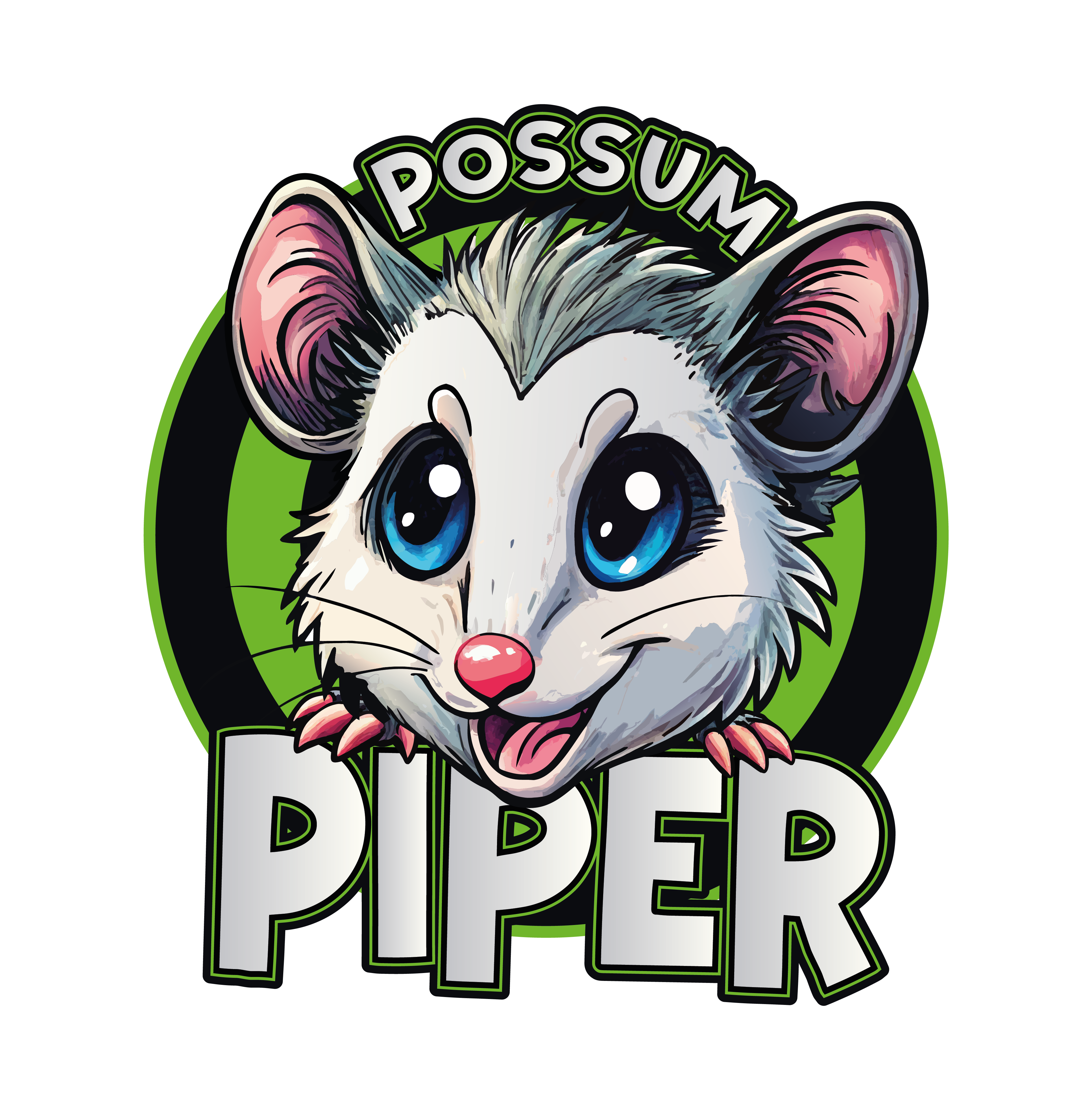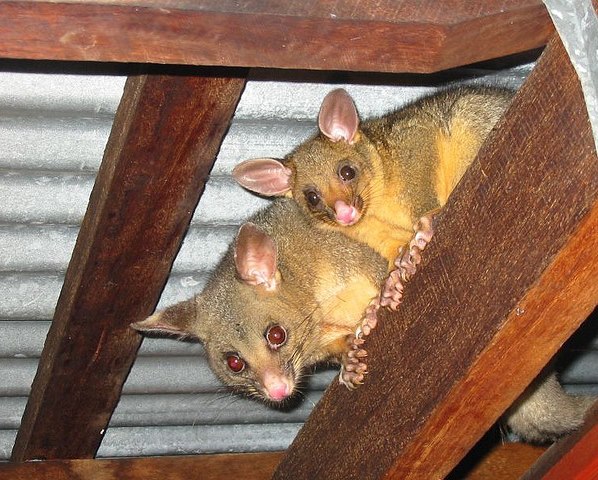Possum
Possum Overview
In the unique landscape of Australia, the longstanding territorial discord between possums and humans has woven a complex narrative that dates back to the very advent of domestic life in the region.
These arboreal marsupials, with their enchanting yet elusive presence, have carved a niche for themselves in the ecosystem, often intersecting with human habitats to create a delicate balance of coexistence.
However, when possums make the decision to venture into our homes or businesses, their endearing charm can quickly transform into a significant challenge, necessitating meticulous attention to possum control measures to ensure the safety and well-being of both the creatures and the human dwellers.
Possum Behavior Patterns
As twilight descends over the Australian landscape, possums emerge from their daytime sanctuaries to embark on their nocturnal adventures. These creatures, known for their keen senses and dexterous movements, traverse gardens, rooftops, and tree canopies with silent agility.
However, their presence can often be marked by the telltale signs of their destructive foraging behaviors, leaving trails of damaged gardens, gnawed structures, and exposed electrical wirings in their wake. To safeguard the sanctity of our habitats, effective possum control strategies become indispensable, offering a holistic approach to managing the delicate equilibrium between wildlife and human settlements.
Delving deeper into the nuances of possum behavior unveils a world of intriguing complexities and social dynamics. These nocturnal creatures, guided by sharp vision and heightened olfactory senses, move with stealth and purpose, leaving behind a symphony of scratching, thumping, and scampering sounds that punctuate the night.
Their well-choreographed routines, marked by consistent departures at dusk and returns at dawn, offer a glimpse into the disciplined lives of these elusive creatures, where territorial dominance and hierarchical structures shape their interactions.
Navigate through the lush foliage of Australian landscapes, and you may encounter the whimsical nesting habits and intricate breeding cycles of possums, offering a glimpse into their intimate family lives and reproductive strategies.
From the dense foliage nests of Ringtail Possums to the cozy tree hollows favored by Brushtail Possums, these creatures exhibit a remarkable diversity in their nesting preferences, adapting to the ever-changing dynamics of their environments with resilience and ingenuity.
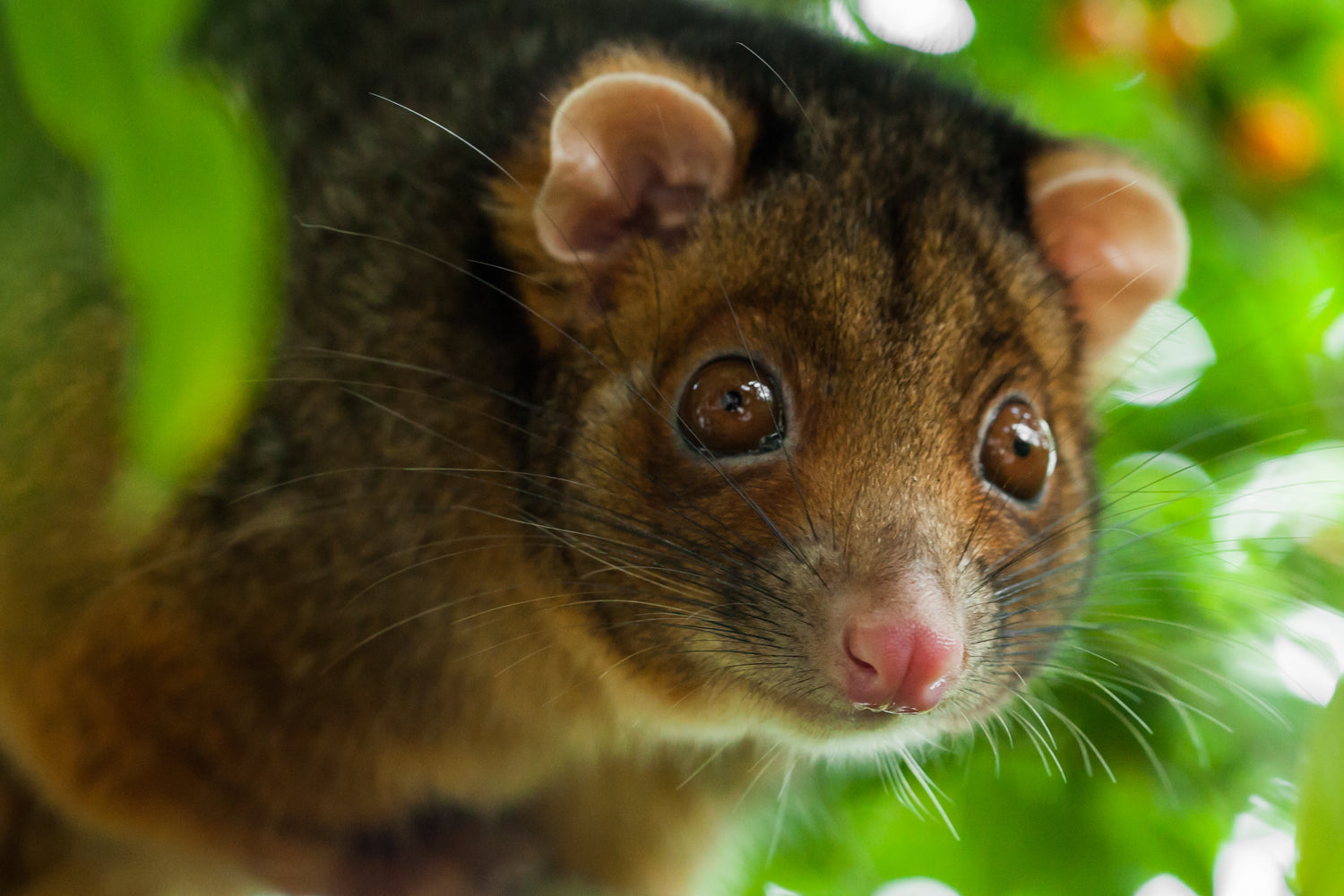
Ringtail Possum
The Ringtail Possums, scientifically known as Pseudocheirus peregrinus, distinguish themselves from their Brushtail relatives by their smaller size, sporting brown fur along with conspicuous white patches located behind their ears. A defining feature is their prehensile tail, tipped with white, that coils into a distinctive ring shape when the possums are in transit, serving as an immediate identifier of their species.
Different species of possums
The intricate tapestry of Australian possum species adds a layer of complexity to the challenge of identifying these elusive creatures. Among the bustling suburban gardens of Australia, two prominent possum breeds, the Common Brushtail Possum and the Ringtail Possum, reign supreme. The Common Brushtail Possum, with its distinctive bushy tail, grey fur, and imposing stature, often asserts its territorial dominance with resounding hisses that echo through the night. In contrast, the diminutive Ringtail Possum captivates observers with its endearing brown fur, white ear patches, and the unmistakable sight of its prehensile tail curling into a ring, a unique characteristic that sets it apart in the possum kingdom.
Beyond these familiar possums lie a treasure trove of lesser-known Australian possum species, each with its own enchanting traits and habitats. From the tiny yet resilient Mountain Pygmy Possums, nestled in the alpine rock screes of southern Victoria and New South Wales, to the elusive Western Ringtail Possums, with their cat-sized frames and distinctive long prehensile tails, the diversity of these marsupials captivates the imagination and underscores the rich tapestry of Australian wildlife.
The symphony of possum sounds, from growling calls and loud shrieks of Common Brushtail Possums to the soft chirps and squeaks of Ringtail Possums, paints a vivid picture of the intricate communication channels that underpin possum society. While these creatures may seem solitary on the surface, their social fabric is woven with threads of territorial dominance, scent markings, and vocalizations that form the backbone of their intricate social structures.
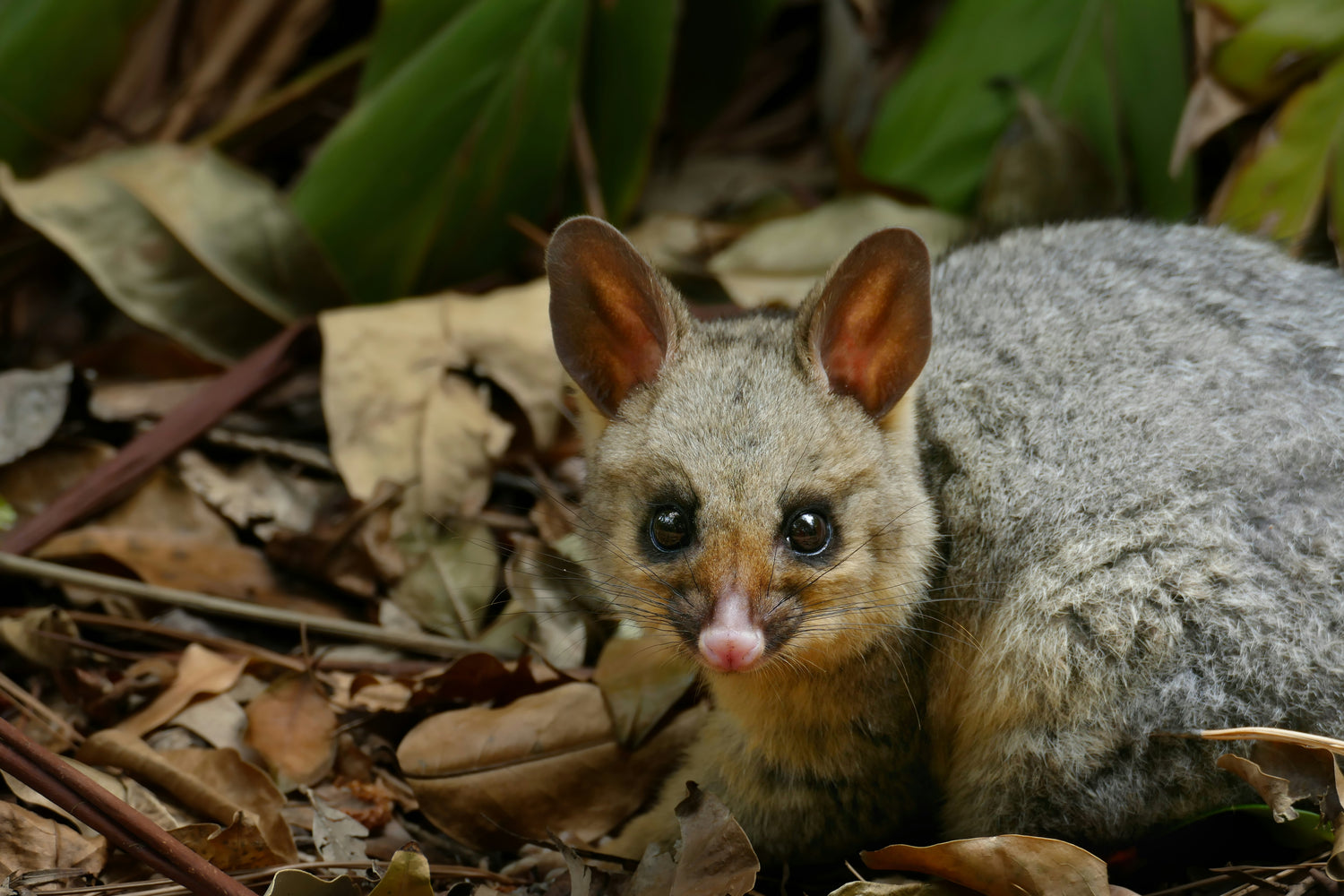
Brushtail Possum
The Brushtail Possum, scientifically known as Trichosurus vulpecula is easily recognizable by its distinctive bushy tail. This possum, boasting grey fur and prominent ears, is the largest possum species that commonly inhabits urban areas. Listen closely, as you may encounter their loud hisses often emitted during territorial conflicts.
Possum Reproduction and Life Cycle
Unravel the mysteries of possum family dynamics, where parental care and shared responsibilities form the cornerstone of their social structures. Witness the tender moments of joeys clinging to their mothers' backs, the nurturing care provided by both parents, and the intricate dances of survival that define possum family life.
Through the lens of possum breeding cycles, we gain a deeper appreciation for the resilience and adaptability of these marsupials, as they navigate the challenges of rearing offspring in a world brimming with complexities and uncertainties.
Possums, like many marsupials, have a unique reproductive cycle that sets them apart from other mammals. The mating season for possums usually occurs during the winter months, with females giving birth to their young in the spring. The female possum has a very short gestation period, typically lasting only about 16 to 18 days.
Once the baby possum, also known as a joey, is born, it is incredibly underdeveloped and will immediately crawl into its mother's pouch.
Inside the safety of the pouch, the joey will continue to nurse and grow for several months. As it grows, the joey will start to peek out of the pouch and eventually ride on its mother's back as she forages for food. This period of development is crucial for the joey as it learns essential skills from its mother, such as foraging for food and avoiding predators.
After spending several months with its mother, the joey will eventually become independent and venture out on its own. However, even after the joey leaves its mother's care, it may still return to her pouch for warmth and comfort, especially during cold nights. This bond between mother and offspring is essential for the survival of the young possum, as they learn valuable survival skills from their parents.
As the young possum matures, it will eventually reach sexual maturity and be ready to have offspring of its own. This cycle of reproduction and life continues, ensuring the survival of the possum population. The intricate life cycle of possums showcases the remarkable adaptability and resilience of these fascinating Australian marsupials.
Possum Survival Mechanisms
Amidst the tranquil rhythms of possum life lie subtle defensive mechanisms that underscore their survival strategies in a world fraught with potential threats. When faced with danger, possums deploy a range of defensive behaviors, from playing dead and emitting foul smells to displaying their teeth and claws in a show of intimidation.
These responses, rooted in centuries of evolution and adaptation, serve as poignant reminders of the delicate balancing act possums perform in maintaining their safety and security in a world teeming with potential dangers.
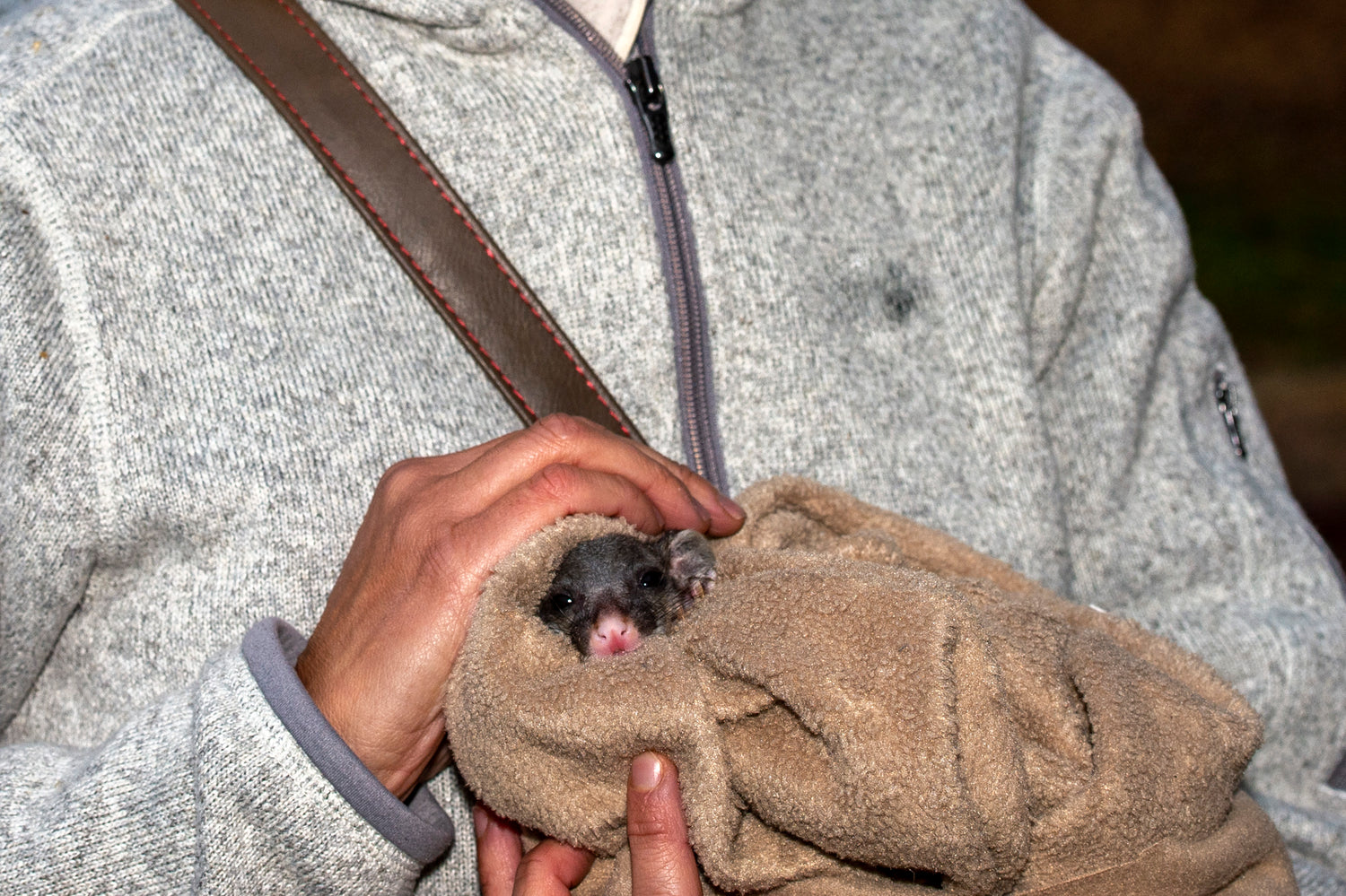
Possum Carers
Possum carers collaborate with wildlife services, providing medical care, rehabilitation, and nurturing environments for possums to thrive. They demonstrate dedication by attending to the health, dietary, and habitat needs of each possum. Their expertise in possum behavior enables them to offer orphaned or injured possums a renewed lease on life, helping them reintegrate into the wild and bolster the native wildlife population.
Possum Management With Humans
Embark on a journey of discovery through the intricate world of possum removal strategies, where humane techniques and preventive measures converge to create harmonious solutions for coexisting with these elusive creatures.
From catch-and-release traps and professional removal services to exclusion techniques and possum-proofing measures, the arsenal of possum control methods offers a nuanced approach to managing possum conflicts with care and compassion.
Dive deeper into the realm of possum deterrence and repellent strategies, where innovative solutions and time-tested techniques converge to create a sanctuary of safety and tranquility in possum-prone habitats.
Through the lens of possum-proofing techniques, motion-triggered sprinklers, ultrasonic sound devices, and commercial deterrents, we gain a deeper appreciation for the intricate dance of balance and harmony that underpins effective possum management strategies.
Embark on a transformative journey of understanding and collaboration, where the intricate dance of coexistence between humans and possums unfolds against the backdrop of a rich and vibrant ecosystem.
Through the lens of professional intervention and ethical wildlife management practices, we gain a deeper appreciation for the interconnected web of life that sustains both possum populations and human communities in a delicate balance of harmony and respect.
Discover the nuances of possum protection and safety measures, where awareness and vigilance serve as the bedrock of responsible wildlife management practices.
Through the lens of disease transmission risks, physical injury mitigation strategies, and safety precautions during possum encounters, we gain a deeper appreciation for the intricate dance of respect and caution that defines our interactions with these enigmatic marsupials.
Embark on a journey of legal compliance and ethical responsibility, where the delicate balance between wildlife conservation and human welfare unfolds against the backdrop of local regulations and guidelines.
Through the lens of catch-and-release license legalities, dead possum removal dilemmas, and preventive measures for possum-related risks, we gain a deeper appreciation for the interconnected web of laws and ethics that shape our interactions with possums in a world brimming with complexities and uncertainties.
Journey through the labyrinth of possum FAQs, where curiosity and inquiry lead us on a transformative quest of understanding and discovery.
Through the lens of common possum misconceptions, possum identification nuances, and humane removal techniques, we unravel the intricate tapestry of possum lore and legend that defines our perceptions of these elusive creatures in the vast tapestry of Australian wildlife.
Conclusion
The symphony of possum behaviors, from territorial disputes and communal dynamics to foraging strategies and defensive mechanisms, offers a rich tapestry of insights into the intricate lives of these enigmatic marsupials.
By delving into the intricacies of possum ecology, behavior, and management practices, we embark on a transformative journey of understanding and collaboration, where the delicate dance of coexistence between humans and possums unfolds against the backdrop of a rich and vibrant ecosystem, teeming with life and mysteries waiting to be unraveled.
